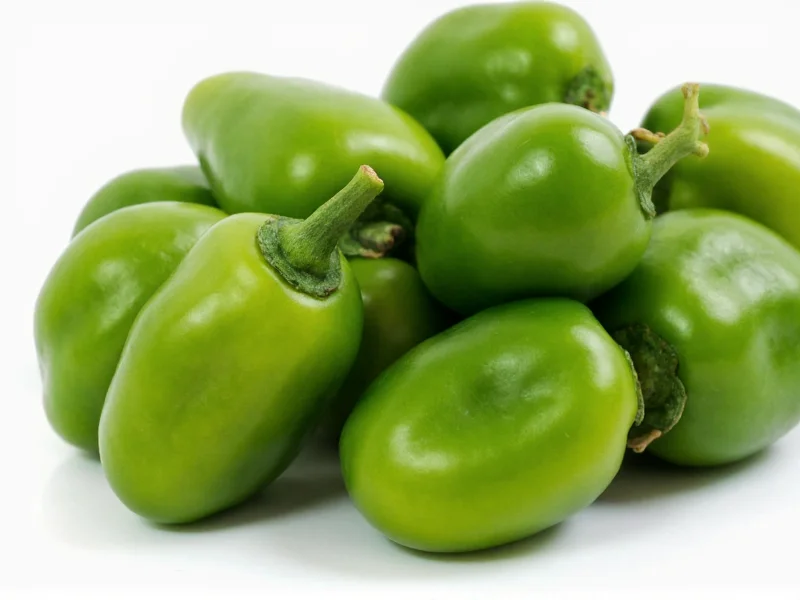Often called "Mexican husk tomatoes," tomatillos have been cultivated for centuries in Mesoamerica. These versatile fruits grow inside a distinctive lantern-like husk that turns from green to tan as they mature. The sticky residue covering the fruit contains withanolides, natural compounds that protect against pests but wash away easily with water.
Understanding Tomatillo Characteristics
Tomatillos differ significantly from their tomato cousins despite their visual similarity. While tomatoes belong to the Solanum genus, tomatillos are part of the Physalis genus, which includes ground cherries and cape gooseberries. Their flavor profile features bright acidity with herbal notes, lacking the sweetness of ripe tomatoes. This unique tartness remains stable during cooking, unlike tomatoes which mellow significantly when heated.
When selecting tomatillos at your local grocery store or farmers market, look for fruits that have filled their husks completely without bursting through. The husk should be dry and papery, not green or moist. Ripe tomatillos will feel firm when gently squeezed. Avoid specimens with dark spots or husks that show signs of mold.
Tomatillo Varieties and Their Uses
| Variety | Color | Flavor Profile | Best Culinary Uses |
|---|---|---|---|
| Tomate Verde | Bright green | Most tart, classic citrus notes | Traditional salsa verde, guacamole |
| Purple de Milpa | Purple-green | Milder acidity, complex fruitiness | Creamy salsas, roasted dishes |
| Tomate Amarillo | Yellow | Sweet-tart balance, tropical notes | Fruit salsas, chutneys, desserts |
| Toma Verde Grande | Large green | Moderate acidity, meaty texture | Stews, braises, canning |
Preparing Tomatillos Properly
Proper preparation unlocks tomatillos' best qualities. Start by removing the husk and rinsing away the sticky coating under cool running water. For raw applications like fresh salsa, simply chop and use immediately. When cooking, roasting or boiling transforms their flavor:
- Boiling method: Simmer whole tomatillos in water for 8-10 minutes until slightly softened but still holding shape. This preserves their bright green color and sharp acidity.
- Roasting technique: Place halved tomatillos under a broiler or on a grill for 5-7 minutes until charred in spots. Roasting deepens flavor and reduces tartness slightly.
- Raw preparation: For maximum freshness in pico de gallo style salsas, use uncooked tomatillos with a squeeze of lime.
Culinary Applications Beyond Salsa Verde
While tomatillos shine in classic salsa verde, their culinary potential extends far beyond. Chefs increasingly incorporate them into diverse dishes where their bright acidity balances rich ingredients. Try adding pureed tomatillos to:
- Seafood stews as a base instead of tomatoes
- Marinades for poultry or pork to tenderize and add flavor
- Vegetable broths for an umami boost
- Breakfast dishes like huevos rancheros
- Modern fusion recipes including tomatillo aioli or sorbet
When substituting tomatillos in recipes, understand that green tomatoes make the closest approximation but lack the distinctive citrus notes. For authentic Mexican cooking, nothing truly replaces fresh tomatillos, though jarred salsa verde can work in a pinch for cooked applications.
Nutritional Profile and Storage Tips
Nutritionally, tomatillos offer impressive benefits per one-cup serving (140g):
- Calories: 42
- Fiber: 3.9g (14% of daily value)
- Vitamin C: 30% of daily value
- Vitamin K: 19% of daily value
- Niacin: 12% of daily value
- Potassium: 6% of daily value
Store unhusked tomatillos in a paper bag in the refrigerator for up to two weeks. Once husked, they'll keep for 3-4 days when stored in an airtight container. For longer preservation, freeze roasted or boiled tomatillos in freezer bags for up to six months—ideal for making winter salsas.
Growing Your Own Tomatillos
Gardening enthusiasts can successfully grow tomatillos in most climates with warm summers. These plants require:
- Full sun exposure (6-8 hours daily)
- Well-draining soil with moderate fertility
- Companion planting (at least two plants for proper pollination)
- Regular watering without waterlogging
Start seeds indoors 6-8 weeks before the last frost date, then transplant outdoors after danger of frost has passed. Tomatillo plants grow vigorously, often reaching 3-4 feet tall, and typically produce fruit 65-85 days after transplanting. Harvest when the husk turns tan and the fruit fills the husk completely.
Are tomatillo peppers actually spicy?
No, tomatillos are not spicy. They have a naturally tart, citrus-like flavor without any heat. The confusion sometimes arises because they're commonly used in spicy Mexican dishes, but the tomatillos themselves contribute acidity, not capsaicin heat.
Can you eat tomatillos raw?
Yes, you can eat tomatillos raw. They have a bright, tart flavor when uncooked that works well in fresh salsas and salads. The raw flavor is more acidic than when cooked, so many prefer roasting or boiling them to mellow the sharpness for certain dishes.
What's the sticky substance on tomatillos?
The sticky coating on tomatillos contains withanolides, natural compounds that protect the fruit from insects and pests. This substance is completely harmless and washes away easily with water. Don't be alarmed if it feels slightly tacky before washing.
How do you know when tomatillos are ripe?
Ripe tomatillos fill their husks completely and may cause the husk to split open slightly. The husk changes from green to a light tan or straw color. The fruit itself should feel firm when gently squeezed. Avoid tomatillos with dark spots or mushy areas.
Can you substitute green tomatoes for tomatillos?
Green tomatoes can serve as a substitute for tomatillos in a pinch, but they lack the distinctive citrus notes. For better results, add a squeeze of lime juice to green tomatoes to approximate tomatillos' tartness. Note that this substitution works best in cooked dishes, not fresh salsas where the flavor difference is more pronounced.











 浙公网安备
33010002000092号
浙公网安备
33010002000092号 浙B2-20120091-4
浙B2-20120091-4